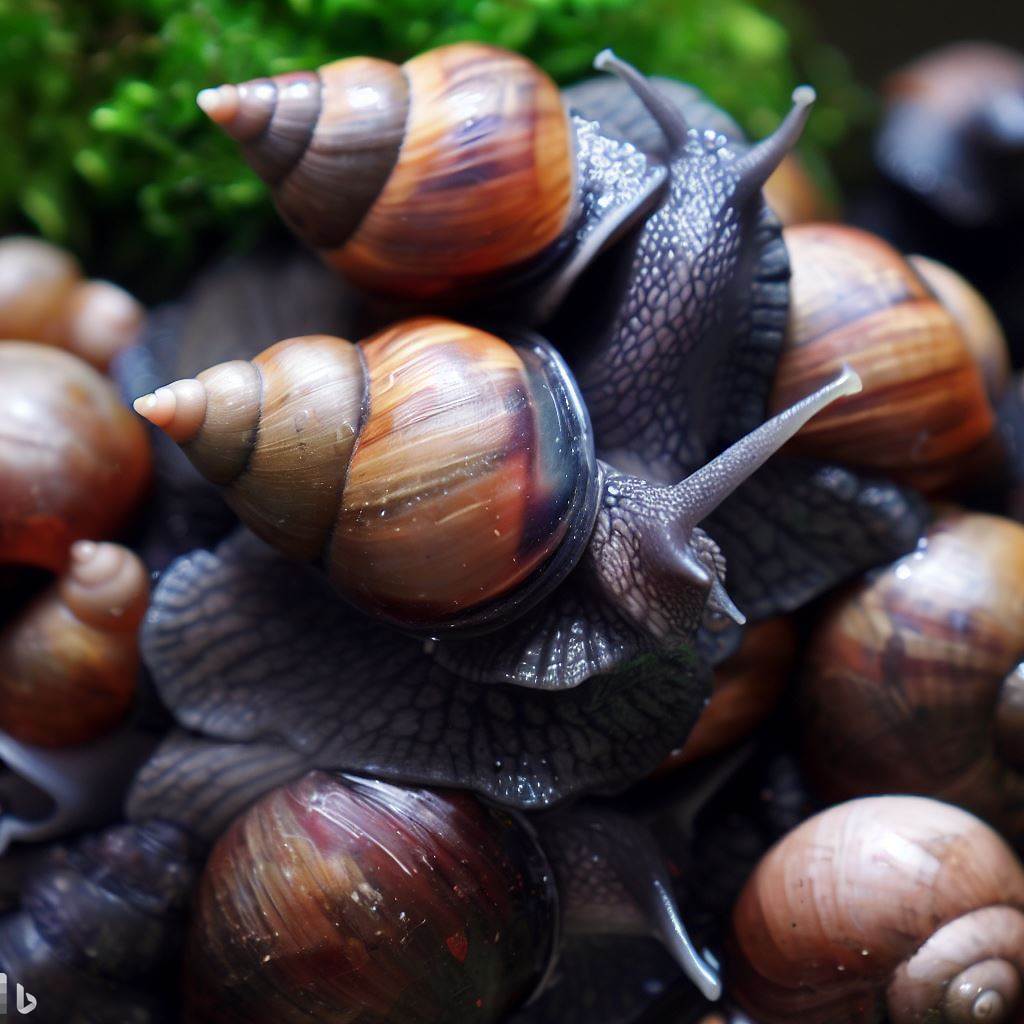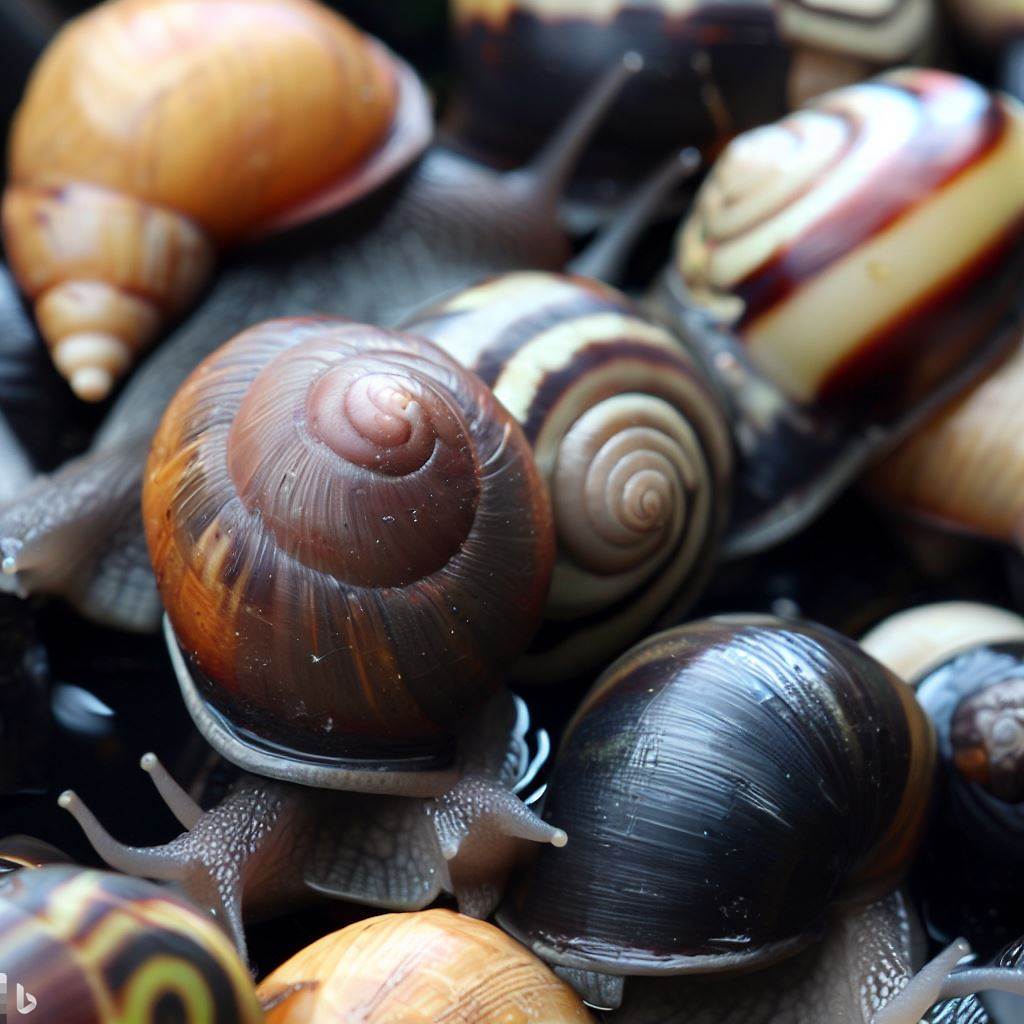As the sun sparkles on the pond, something small and strikingly beautiful catches our eye. Yes, it’s a Japanese snail, gently gliding through the water with an air of delicate tranquility. For us pond enthusiasts, adding these little creatures can transform your garden oasis into a mesmerizing underwater world.
Let me tell you; Japanese snails, for ponds especially, aren’t your ordinary gastropods! These tiny maestros play an integral role in maintaining equilibrium in our ponds. Talk about multi-taskers! They filter feed while landscaping unwanted algae – quite the package deal!
So next time you catch sight of that shimmering shell bobbing along, remember this: every great pond has its secret weapon – and for yours, it might just be one of these fascinating Japanese snails.
Here is an exciting article you might be interested in leaving a foundation exposed over winter
Another article for you manufactured home on basement
Types of Japanese Snails Suitable for Ponds
When it comes to choosing the right snail species for your pond, there are several options available.
a. One popular choice is the Japanese trapdoor snail (Cipangopaludina japonica). This dark brown or black-shelled snail is known for its ability to withstand different water conditions.

b. Another option is the pond snail (Lymnaea stagnalis), which has a conical shell and thrives in freshwater environments.
c. Lastly, aquarium snails like Nerite snails (Neritina spp.) can also be introduced into ponds as they are efficient algae eaters.
Features and Characteristics of Japanese Pond Snails
Japanese pond snails have unique features that make them well-suited for life in a pond ecosystem:
1. They have a hard shell to protect themselves from predators and environmental factors.
2. Also, their muscular foot helps them move around the bottom of the pond or cling to plants and rocks.
3. Additionally, their tentacles allow them to sense their surroundings and locate food sources.
Benefits of Having Japanese Snails for Ponds
Introducing Japanese snails into your pond can bring numerous benefits to both you as an owner and your aquatic environment.
Firstly, these voracious eaters will help control algae growth by consuming excess nutrients in the water. This not only improves water quality but also enhances overall aesthetics by reducing greenish tint caused by algal blooms.
Secondly, their constant movement stirs up sediment at the bottom of the pond, preventing it from becoming stagnant or lifeless.
Maintenance and Care Needs for Japanese Pond Snails
Keeping Japanese pond snails healthy requires some basic maintenance and care.
It is important to regularly check water parameters such as temperature, pH levels, and ammonia levels to ensure they are within the optimal range for snail survival.
Additionally, providing a well-balanced diet of algae wafers, vegetables like spinach or lettuce, and occasional calcium-rich supplements will keep them nourished.
Breeding Conditions and Reproduction Habits of Japanese Pond Snails
Japanese pond snails are known for their ability to reproduce easily in suitable conditions. They are hermaphrodites, meaning each individual possesses both male and female reproductive organs.
This allows them to lay eggs even without a partner present. The eggs are laid in gelatinous clumps attached to surfaces around the pond and hatch into tiny juveniles after a few weeks.
Dietary Requirements for Healthy Lifespan of these mollusks
To promote a healthy lifespan for your Japanese pond snails, it’s crucial to provide them with a diverse diet that includes algae-based foods rich in nutrients like spirulina flakes or pellets.
Supplementing their diet with fresh vegetables helps meet their nutritional needs while ensuring proper shell growth.
Aquarium Compatibility: Ideal Plants, Fish, and Aquatic Life Co-habitants
Introducing Japanese pond snails into an established aquarium requires careful consideration of compatible tankmates.
These peaceful creatures get along well with most fish species like guppies or mollies that won’t harm or prey on them.
In terms of aquatic plants, Java moss or hornwort can serve as ideal choices as they provide hiding spots plus supplemental food sources.
Potential Challenges or Concerns with Keeping Japanese Pond Snails
While keeping Japanese snails for ponds may seem hassle-free at first glance, there are potential challenges you should be aware of.
One common issue is overpopulation due to rapid reproduction rates if suitable control measures aren’t implemented.
Additionally, in warmer climates, these snails may become dormant during the hot summer months and require special attention to ensure their survival.
Practical Guidelines to Control Population Growth
If you notice a rapid increase in the snail population, it’s essential to take proactive steps to prevent overpopulation.
1. Manual removal by scooping out excess individuals can help curb their numbers.
2. Alternatively, introducing natural predators like certain species of fish or ducks that feed on snails can also provide effective population control.

Role of These Species in Ecosystem Preservation within Ponds
Japanese pond snails play a vital role in preserving the delicate balance of your pond ecosystem.
By consuming excessive algae and stirring up sediment, they contribute to maintaining water clarity and preventing foul odors caused by decaying organic matter.
Their presence also attracts other wildlife such as dragonflies or birds that prey on them, creating a thriving food web within your pond.
Health Issues Commonly Faced by Pond Snails from Japan
While Japanese pond snails are generally hardy creatures, there are some health issues that they may encounter.
One common problem is shell damage caused by rough surfaces or poor water quality leading to weakened shells susceptible to cracks or erosion.
Another concern is parasitic infections which can lead to lethargy and reduced appetite if left untreated.
Summary
Incorporating Japanese snails into your pond can bring numerous benefits including improved water quality through algae control and enhanced aesthetics.
By providing proper care, nutrition, and suitable tankmates, you can create a thriving ecosystem that supports the well-being of these amazing aquatic creatures.
Remember to monitor their population growth and take appropriate steps to prevent overpopulation while appreciating their vital role in preserving your pond’s delicate balance.
If you found this article exciting, here is another great read: muck eater for ponds
We also found this great pick for you: my bell peppers are small
FAQs
Q: What are Japanese Trapdoor Snails and how do they benefit ponds?
A: Japanese Trapdoor Snails are a type of freshwater snail, scientifically known as Viviparis malleatus. They are beneficial for ponds as they help control algae growth by feeding on it, keeping the pond water clean and clear.
Q: Are Japanese Trapdoor Snails good for koi ponds?
A: Yes, Japanese Trapdoor Snails are excellent for koi ponds. They not only eat algae but also consume decaying organic matter, helping to maintain a healthy environment for your koi fish.
Q: How many Japanese Trapdoor Snails should I put in my pond?
A: It is recommended to have approximately 1 snail per 50 gallons of water in your pond. This ratio ensures that there are enough snails to effectively control algae without overcrowding the pond.
Q: Do Japanese Trapdoor Snails eat pond plants?
A: Japanese Trapdoor Snails primarily feed on algae and decaying matter. They do not have a strong appetite for live pond plants, so you don’t have to worry about them damaging your aquatic vegetation.
Q: Can Japanese Trapdoor Snails survive in Northern climates?
A: Yes, Japanese Trapdoor Snails are hardy and can survive in Northern climates. They are capable of withstanding colder temperatures and continue to thrive in ponds even during winter months.
Q: How do I introduce Japanese Trapdoor Snails to my pond?
A: When introducing Japanese Trapdoor Snails, simply float the bag they come in on the surface of your pond for about an hour. This will allow the water temperature inside the bag to gradually equalize with the pond water. Then, open the bag and gently release the snails into your pond.
Q: How long do Japanese Trapdoor Snails live?
A: Japanese Trapdoor Snails have an average lifespan of 2-3 years. With proper care and a suitable environment, they may even live longer.
Q: Can I order Japanese Trapdoor Snails online?
A: Yes, you can easily order Japanese Trapdoor Snails online. There are reputable sellers and specialized websites that offer these snails for sale, allowing you to conveniently enhance your pond’s ecosystem.
Q: Do Japanese Trapdoor Snails require any special care or feeding?
A: Japanese Trapdoor Snails are low-maintenance. They primarily feed on algae and decaying matter, so they don’t require additional fish food or specific feeding. They will find food naturally in your pond.
Q: Are there any additional benefits of keeping Japanese Trapdoor Snails in my pond?
A: Yes, besides their excellent algae-eating abilities, Japanese Trapdoor Snails have the additional benefit of being live-bearing snails. They reproduce by giving birth to live young, which can increase the snail population in your pond over time.
